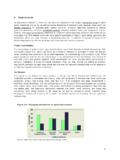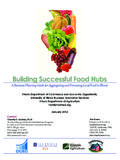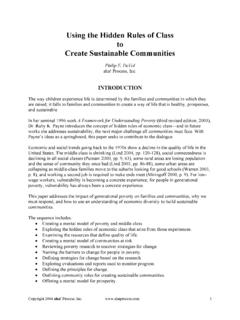Transcription of Good Agricultural and Manufacturing (Handling) …
1 good Agricultural and Manufacturing ( handling ). safety and Food Defense Practices as Part of fresh Blueberry Farming, Packing and Distribution NORTH AMERICAN BLUEBERRY COUNCIL. 80 Iron Point Circle, Suite 114. Folsom, California 95630. Phone (916) 983-2279 Fax (916) 983-9370. Website: 1. good Agricultural and Manufacturing ( handling ) safety and Food Defense Practices as Part of fresh Blueberry Farming, Packing and Distribution March 2010. ACKNOWLEDGEMENT. The North American Blueberry Council (NABC) has adapted this document from the Michigan State University Extension publication titled good Agricultural Practices for Food safety in Blueberry Production: Basic Principles.
2 Which was prepared by Anamaria Gomez Rodas, Les Bourquin, Carlos Garcia Salazar, Anamaria Varela-Gomez and John C. Wise from the Department of Entomology, Trevor Nichols Research Complex; Department of Food Science and Human Nutrition; MSU Extension Central Region- Ottawa County . The NABC wishes to thank these individuals for their work and for the opportunity to adapt their publication for use by blueberry growers and handlers throughout North America. TABLE OF CONTENTS. Blueberry GAP Basic Principles .. Page: 5. I. Farm History .. 8. Previous land use.
3 8. Adjacent land use .. 8. II. Water .. 8. Hazards associated with water .. 8. Agricultural water .. 8. Best Management Practices for Irrigation water .. 9. Processing water .. 10. III. Worker Health and Hygiene .. 10. Control of potential microbial hazards .. 11. Prevention .. 11. Train Workers in good Hygiene and Document the Training .. 11. U-Pick operations .. 12. Hand washing .. 12. Correct way to wash hands .. 13. Alternative good Hygienic Practices .. 13. Drinking water .. 13. Toilet use .. 14. First Aid .. 14. Blood and Bodily Fluid Contamination 14.
4 Personal hygiene .. 14. 2. IV. HACCP .. 15. What does all this mean? .. 15. What does clean mean? .. 16. The 7 principles of HACCP .. 16. Conducting a hazard analysis .. 16. How to tell a Control Point from a Critical Control Point .. 17. Types of charts .. 17. Establishing critical limits and monitoring procedures .. 17. Establishing corrective actions and verification processes .. 17. Establishing record keeping and documentation procedures .. 18. V. Field Sanitation .. 18. Part 500 field sanitation .. 18. Drinking water .. 19. Toilet and hand washing facilities.
5 19. Sewer disposal .. 20. Pre-harvest field sanitation .. 20. Harvest field sanitation .. 20. Equipment maintenance .. 21. Record Keeping .. 21. VI. Harvest .. 21. fresh pack - Manual harvest considerations .. 21. Rules for Hand Pickers .. 22. Processing blueberries mechanical harvest considerations .. 22. Rules for blueberry mechanical harvest .. 23. VII. Post-Harvest .. 23. General fresh packing/sorting considerations .. 23. Processed blueberries .. 24. Wash water quality .. 24. Processing water .. 24. Water disinfection .. 24. VII. Packing/Shipping Facilities.
6 25. Packing house general housekeeping .. 25. Containers and pallets .. 25. Cold storage facilities .. 26. Packing house sanitation .. 26. Worker hygiene .. 26. Containers and Packaging .. 26. Packing facility maintenance .. 27. Pest control .. 27. 3. IX. Pesticide Use and safety .. 28. Pesticide use and worker safety .. 28. Pesticide use guidelines .. 28. Pesticide selection .. 28. Pesticide handling .. 28. Pesticide application .. 28. Pesticide storage .. 28. Use permits and posting requirements .. 28. Pesticide application record keeping .. 29. Private/Commercial applicator certification.
7 29. Documentation of training .. 29. Applicator, mixer/loader and field worker safety requirements .. 29. Pesticide disposal .. 29. Worker safety .. 30. X. Trace Back .. 30. Suggested trace back procedures .. 30. XI. Transportation .. 31. Appendix A: Short introduction to blueberry production .. 33. Appendix B: Common terms, acronyms and definitions .. 34. Appendix C: HACCP Materials .. 39. Appendix D: Signs and symptoms of common infections diseases .. 45. Appendix E: Checklists .. 47. Published March 2010 by the North American Blueberry Council 80 Iron Point Circle, Suite 114; Folsom, California 95630.
8 4. BLUEBERRY GAP/GMP BASIC PRINCIPLES. The aim of this guide is to insure consumer protection from eating blueberries, recognizing that we not only are producers but also consumers. BACKGROUND. Consumption of fresh fruits and vegetables has increased dramatically during the past 10-15 years. However, food borne illnesses attributed to produce have also risen to about 15% of the total food borne illnesses in the USA. Produce food borne illnesses have been associated with pathogenic bacteria like Salmonella spp., Eschericia coli O157:H7, Shigella; with viruses like Hepatitis, and parasites like Crystoporidium parvum, Giardia lambdia and Cyclospora cayetanensis.
9 This increase in the incidence of foodborne illnesses has been the consequence of higher per capita consumption, larger distribution markets, better reporting and follow-up, and other factors. Blueberries are one crop that has grown in popularity thanks to their health attributes and efforts by all responsible for growing, packing and distributing. There has been no foodborne illness case associated with blueberries in the USA, but there has been a hepatitis outbreak associated with blueberries in New Zealand (Calder et al, 2003), and some scares. It has been reported that Salmonella and E.
10 Coli O157:H7 are capable of growing in blueberries (Waters and Beuchat, 2004; Tokitkla et al, 2004; Bialca and Demirci, 2007). Moreover, there have been a number of foodborne outbreaks associated with other berries and acid fruits including strawberries (hepatitis A) and raspberries (Cyclospora), in addition, there have been numerous outbreaks linked to Salmonella (lettuce, almonds, tomatoes), E. coli O157:H7 (spinach, jalapenos, orange juice), and Shigella (green onions) amongst others (). In many, if not all cases, the industry has suffered economically and from a reputation standpoint, both innocent and guilty parties.





